How does wood decay improves forest health for biodiversity conservation?
Healthy forest is when the forest ecosystem could sustain its biodiversity while providing for human needs. One of the indicators for promoting forest biodiversity is soil health. Fungi and organic matters such as dead wood volume (Persiani et al., 2015, Gupta 2020) plays an important role in maintaining soil health. Researchers found that the basis of forest health ecosystem is the interplay of mycelial networks from saprophytic, mycorrhizal, endophytic and parasitic fungi (Stamets, 2005).
Macrofungi (or mushrooms) are sources of medicine not only for human health but for forests too. The larger fungi, also well known as macrofungi, plays important role in decaying wood. There are several types of macrofungi that can be found in Malaysian forests with a variety of shapes, colours and textures. From the researchers’ observation of some lowland forests around Selangor and Negeri Sembilan, common types of macrofungi found are the bracket, cup, jelly, coral, dead man’s fingers, boletes, puffballs, as well as common gilled mushroom forms such as agarics and chanterelles. Most of these macrofungi are associated with wood decay and mainly act as decomposers by breaking down lignocellulosic materials from woody plants and other parts of the trees, such as leaves and stumps (Figure 2), while some decompose animal debris such as insects (Figure 3) and their nests in the forest as well.
Saprobic fungi that attack dead wood leads to three types of wood rot namely brown rot, white rot and soft rot. They change the wood colour and texture and decayed wood deposit different types of nutrient. Meanwhile, parasitic fungi (or normally categorized as fungi associated with tree disease) colonize some large trees ‘identified as weakened’ living trees that finally cause these trees to die and rot on the forest floor by the saprobic fungi (Figure 4). The nutrition from the dead trees is then transferred to the soil for other living trees around them. These decomposed woody materials are then returned to the soil and serves as soil conditioners and fertilizers. Other than saprobic fungi, endophytic fungi such as Termitomyces i.e. fungus produced by termites, possess fungus and plant partnerships, that provide nutrition to the termite colonies. In fact, one should be aware that the forest and its environment is nature’s example of good collaboration and cooperation. The mycelial network under the forest floor give signals among and within the trees with the help of mycorrhizal fungi which provide and distribute nutrients among the trees in the forests, while saprobic, endophytic and parasitic fungi help in recycling of carbon, nitrogen and other essential elements.
Macrofungal also acts as agent for habitat restoration. Among the macrofungal community, there are certain warmer-tolerant fungi such as Schizophyllum commune (more commonly found in the oil palm plantation) and Amauroderma spp. (more widespread in old grown forests) that could adapt with climate change and restore the damaged areas especially the more open area where microclimate change rapidly in drier and warmer environment (Figure 5). In addition, macrofungal could bioremediate forest soil and water by removing toxic matters such as heavy metal components. Indeed, one should be careful of eating mushrooms that is found in contaminated soil. There are reports that some heavy metals e.g. lead (Pb) and cadmium (Cd) could not be eliminated even by cooking them at high temperature!
A study was carried out by our research team in collaboration between UPM, Universiti Kebangsaan Malaysia (UKM), and University of Nottingham Malaysia (UNM) on macrofungal community at four different landscapes in the North Selangor peat swamp forest and the converted oil palm plantation next to the forest. A team of five researchers conducted the macrofungal inventory, collection and identification. Macrofungi with visible fruiting bodies detected on the forest floor, fallen logs, living and dead standing trees were sampled in the study area. The macrofungi were photographed and some unidentified samples were tagged for fresh specimen and then stored in a multiple partition plastic box to be identified later. It was found that there were a total of 757 clusters of macrofungi belonging to 127 morphospecies in all the four landscapes. However, another major finding revealed that peat swamp forest supports greater macrofungal diversity than the large scale, monoculture and polyculture oil palm plantations. It is clear that changes in microclimate between those habitats caused by human-modified landscapes reduced macrofungal biodiversity (Shuhada et al., 2017). Recently, it was discovered that substrate richness influenced the macrofungal community the most which is then followed by microclimate and soil characteristics (Shuhada et al., 2020). The substrate types include branch, twigs, leaf litter, fruit shells, living trees, trunk, soil, coarse wood, fallen tree, stump, oil palm frond, living oil palm, coconut trunk and buttress. Dead fallen branches are decayed by a succession of certain fungi species such as Microporus that can break down both cellulose and lignin, while dead oil palm fronds are commonly decayed by fungi such as Schizophyllum commune (Figure 6). In relation to the findings, further studies are currently being conducted to investigate the macrofungal community associated with certain tree species in tropical forests for better understanding of macrofungal community and their functional role.
Mycoforestry or study on macrofungal in the forest is thus essential to preserve the native forests, recovery and recycling of woodland debris, enhancement of replanted trees, strengthening the sustainability of ecosystems and economic diversity. It is of great value to comprehend the uniqueness of macrofungal community, as each species has its own functional role to contribute to forest health and biodiversity. When their functional roles are realized then this could also lead to a proper and suitable schedule for selection of trees to be harvested for timber. This is important with regards to conserving the biodiversity of the forest. Extensive extraction of these timber species might cause species extinction due to inadequate regeneration and hence need to be protected.
Macrofungi (or mushrooms) are sources of medicine not only for human health but for forests too. The larger fungi, also well known as macrofungi, plays important role in decaying wood. There are several types of macrofungi that can be found in Malaysian forests with a variety of shapes, colours and textures. From the researchers’ observation of some lowland forests around Selangor and Negeri Sembilan, common types of macrofungi found are the bracket, cup, jelly, coral, dead man’s fingers, boletes, puffballs, as well as common gilled mushroom forms such as agarics and chanterelles. Most of these macrofungi are associated with wood decay and mainly act as decomposers by breaking down lignocellulosic materials from woody plants and other parts of the trees, such as leaves and stumps (Figure 2), while some decompose animal debris such as insects (Figure 3) and their nests in the forest as well.
Saprobic fungi that attack dead wood leads to three types of wood rot namely brown rot, white rot and soft rot. They change the wood colour and texture and decayed wood deposit different types of nutrient. Meanwhile, parasitic fungi (or normally categorized as fungi associated with tree disease) colonize some large trees ‘identified as weakened’ living trees that finally cause these trees to die and rot on the forest floor by the saprobic fungi (Figure 4). The nutrition from the dead trees is then transferred to the soil for other living trees around them. These decomposed woody materials are then returned to the soil and serves as soil conditioners and fertilizers. Other than saprobic fungi, endophytic fungi such as Termitomyces i.e. fungus produced by termites, possess fungus and plant partnerships, that provide nutrition to the termite colonies. In fact, one should be aware that the forest and its environment is nature’s example of good collaboration and cooperation. The mycelial network under the forest floor give signals among and within the trees with the help of mycorrhizal fungi which provide and distribute nutrients among the trees in the forests, while saprobic, endophytic and parasitic fungi help in recycling of carbon, nitrogen and other essential elements.
Macrofungal also acts as agent for habitat restoration. Among the macrofungal community, there are certain warmer-tolerant fungi such as Schizophyllum commune (more commonly found in the oil palm plantation) and Amauroderma spp. (more widespread in old grown forests) that could adapt with climate change and restore the damaged areas especially the more open area where microclimate change rapidly in drier and warmer environment (Figure 5). In addition, macrofungal could bioremediate forest soil and water by removing toxic matters such as heavy metal components. Indeed, one should be careful of eating mushrooms that is found in contaminated soil. There are reports that some heavy metals e.g. lead (Pb) and cadmium (Cd) could not be eliminated even by cooking them at high temperature!
A study was carried out by our research team in collaboration between UPM, Universiti Kebangsaan Malaysia (UKM), and University of Nottingham Malaysia (UNM) on macrofungal community at four different landscapes in the North Selangor peat swamp forest and the converted oil palm plantation next to the forest. A team of five researchers conducted the macrofungal inventory, collection and identification. Macrofungi with visible fruiting bodies detected on the forest floor, fallen logs, living and dead standing trees were sampled in the study area. The macrofungi were photographed and some unidentified samples were tagged for fresh specimen and then stored in a multiple partition plastic box to be identified later. It was found that there were a total of 757 clusters of macrofungi belonging to 127 morphospecies in all the four landscapes. However, another major finding revealed that peat swamp forest supports greater macrofungal diversity than the large scale, monoculture and polyculture oil palm plantations. It is clear that changes in microclimate between those habitats caused by human-modified landscapes reduced macrofungal biodiversity (Shuhada et al., 2017). Recently, it was discovered that substrate richness influenced the macrofungal community the most which is then followed by microclimate and soil characteristics (Shuhada et al., 2020). The substrate types include branch, twigs, leaf litter, fruit shells, living trees, trunk, soil, coarse wood, fallen tree, stump, oil palm frond, living oil palm, coconut trunk and buttress. Dead fallen branches are decayed by a succession of certain fungi species such as Microporus that can break down both cellulose and lignin, while dead oil palm fronds are commonly decayed by fungi such as Schizophyllum commune (Figure 6). In relation to the findings, further studies are currently being conducted to investigate the macrofungal community associated with certain tree species in tropical forests for better understanding of macrofungal community and their functional role.
Mycoforestry or study on macrofungal in the forest is thus essential to preserve the native forests, recovery and recycling of woodland debris, enhancement of replanted trees, strengthening the sustainability of ecosystems and economic diversity. It is of great value to comprehend the uniqueness of macrofungal community, as each species has its own functional role to contribute to forest health and biodiversity. When their functional roles are realized then this could also lead to a proper and suitable schedule for selection of trees to be harvested for timber. This is important with regards to conserving the biodiversity of the forest. Extensive extraction of these timber species might cause species extinction due to inadequate regeneration and hence need to be protected.
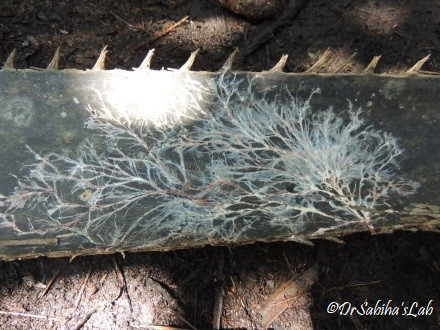
Figure 1. Mycelium networking throughout an oil palm frond
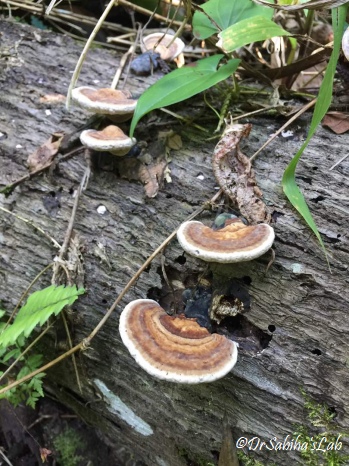
Figure 2. Bracket fungi break down dead trunk into nutrients that could provide nutrition to other trees
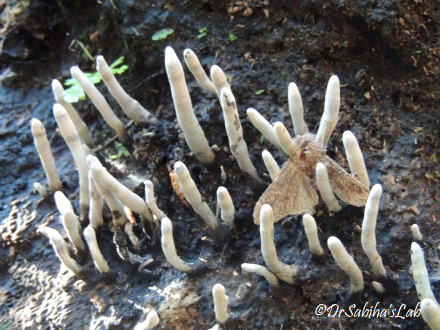
Figure 3. Dead man’s finger or Xylaria sp. decomposing an insect
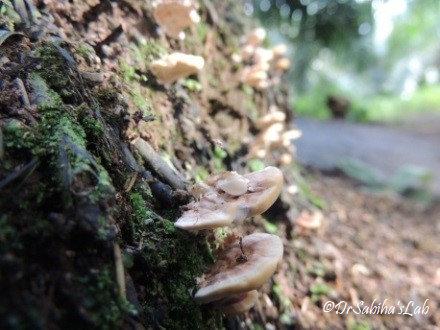
Figure 4. Bracket fungi, a pathogenic fungi decomposing weakened stump
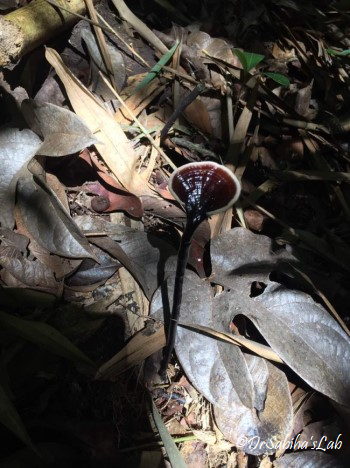
Figure 5. Some species could adapt to warmer and drier environment
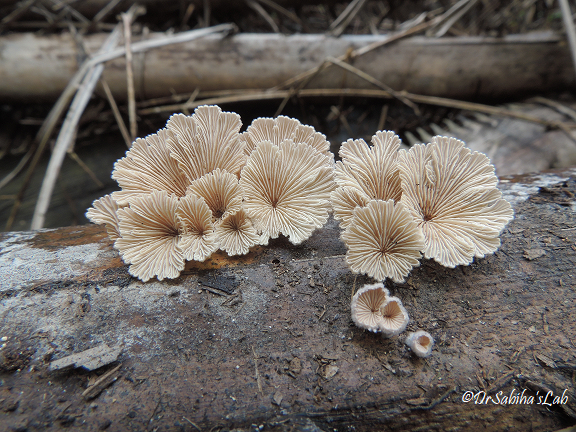
Figure 6. Schizophyllum commune (Cendawan kukur) as a ‘succulent’ fungi that could survive in an open area for habitat restoration
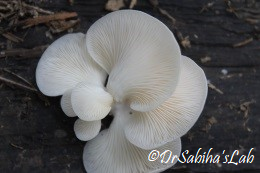
Figure 7. Pleurotus sp., a tasty delicacies as well as claimed to be a medium for bioremediation of contaminated soil
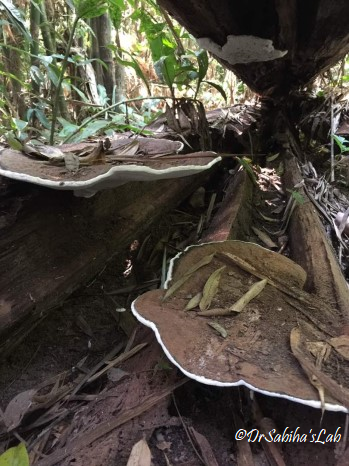
Figure 8. Some common fungi in old growth secondary forest
 |
||||||||||||||||
| Faculty of Forestry and Environment, Universiti Putra Malaysia | ||||||||||||||||
| @forenvupm | @forenvupmi | 603-9769 7171 | https://forenv.upm.edu.my | dean.forenv@upm.edu.my | ||||||||||||
